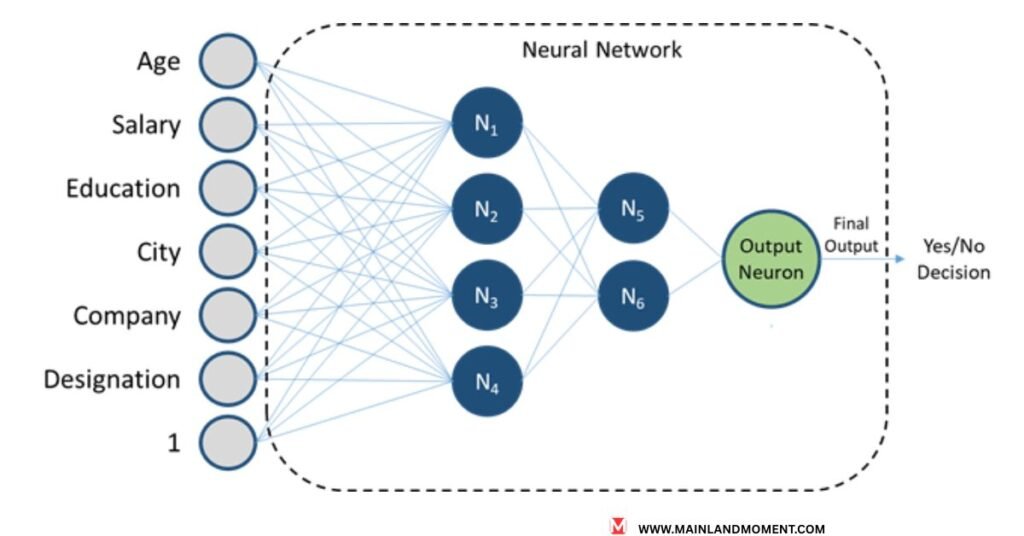Neural networks have become the driving force behind today’s AI revolution. From the smartphone in your pocket to the cars driving themselves on highways, these brain-inspired systems power the technology that’s reshaping our world.
Think of a neural net as a simplified version of your brain. Just like your brain uses neurons to process information and make decisions, artificial neural networks use mathematical models to learn patterns and solve problems. The best part? They’re getting smarter every day.
What is a Neural Network?
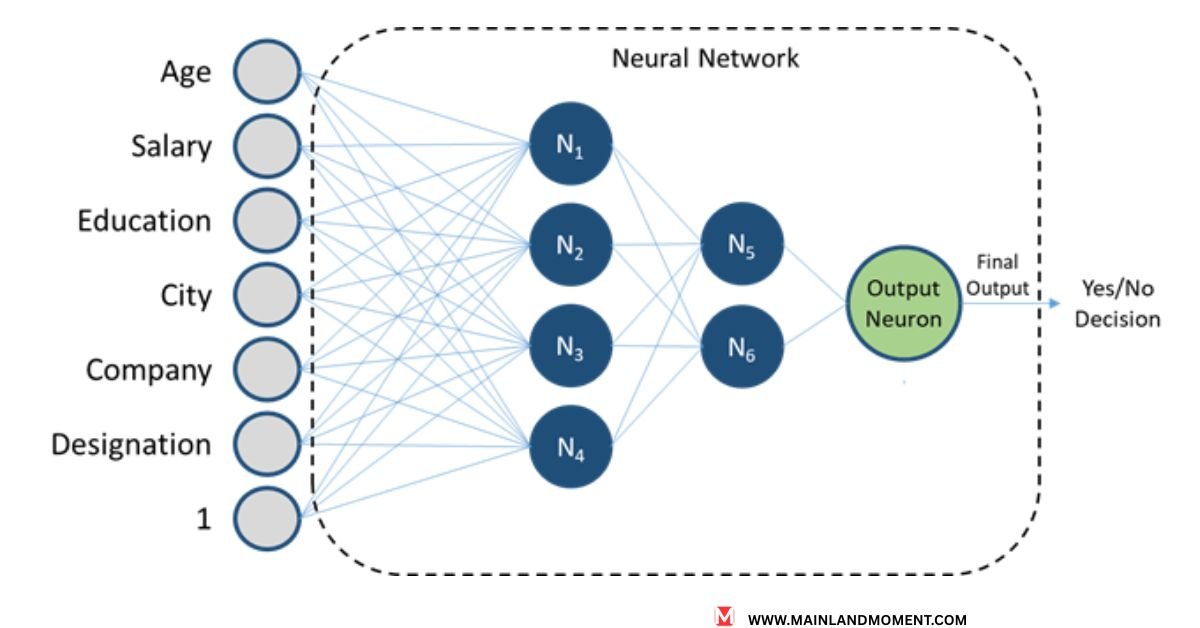
Netural Nets are computer systems designed to work like the human brain. They consist of interconnected nodes called artificial neurons that process information and learn from experience.
Here’s how it works in simple terms:
- Input data enters the system
- The network processes this information through multiple layers
- Each layer transforms the data slightly
- Finally, the output layer provides an answer or prediction
Key Components of Neural Networks
| Component | Function | Real-World Example |
|---|---|---|
| Input layer | Receives raw data | Photo pixels entering an image recognition system |
| Hidden layers | Process and transform data | Pattern detection in the photo |
| Output layer | Provides final results | "This is a cat" or "This is a dog." |
| Weights | Control connection strength | How much does each pixel matter for the decision |
Machine learning algorithms use these components to create intelligent systems that improve with experience. The more training data you feed them, the better they become at making accurate predictions.

How Do Neural Networks Work?
Understanding how a neural net operates is easier than you might think. Let’s break it down into simple steps:

The Learning Process
- Data Input: Information enters through the input layer of neural nets.
- Processing: Hidden layers in neural nets analyze patterns using activation functions.
- Prediction: The output layer of neural nets makes a decision based on the learned data.
- Feedback: The system compares its guess with the correct answer.
- Improvement: Gradient descent adjusts weights to reduce errors and boost accuracy.
Training vs. Using Neural Networks
Training Phase:
- Feed thousands of examples to the neural network
- Use supervised learning with labeled datasets
- Apply the cost function to measure mistakes
- Optimize using algorithms like gradient descent
Inference Phase:
- Input new, unseen data
- Get instant predictions
- No learning happens during this phase
The magic happens during training. A deep learning model might look at millions of cat photos before it can reliably identify cats in new images.
Types of Neural Networks
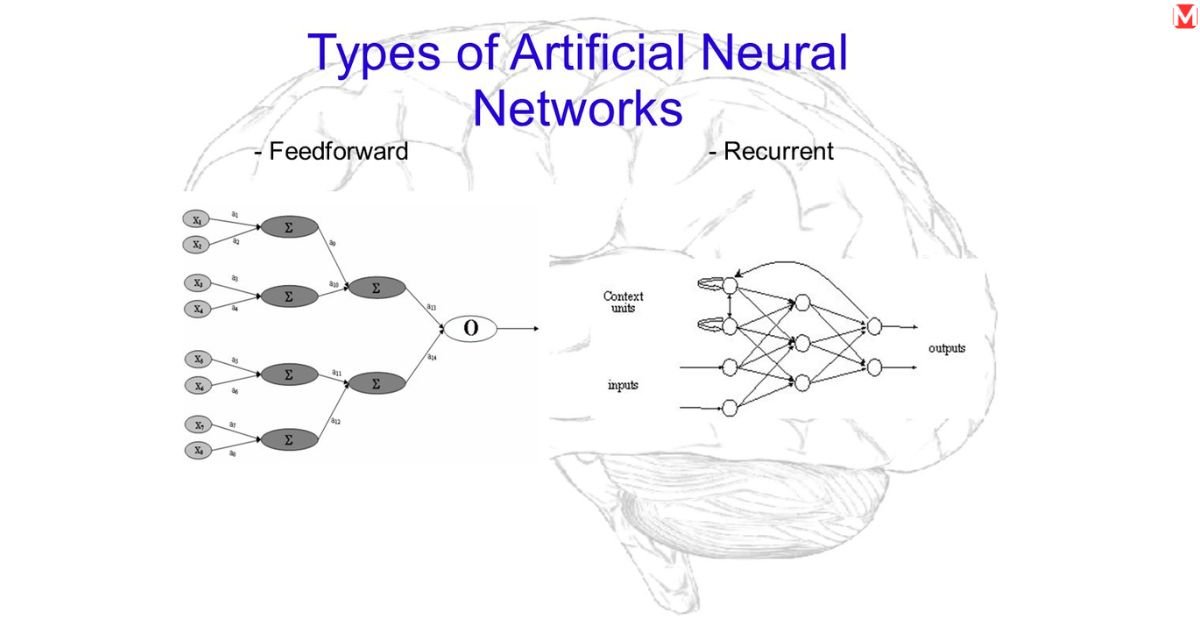
Different problems require different neural network architectures. Here are the most important types you should know:
Feedforward Networks
Feedforward networks are the simplest type of artificial neural network. Information flows in one direction only – from input to output.
Best for:
- Basic classification tasks
- Simple pattern recognition
- Beginner-friendly projects
Convolutional Neural Networks (CNNs)
CNNs excel at processing visual information. They use special neural layers called convolutional layers to detect features like edges and shapes.
Real-world applications:
- Medical imaging: Detecting cancer in X-rays
- Social media: Automatic photo tagging
- Security: Facial recognition systems
Recurrent Neural Networks (RNNs)
RNNs have memory. They can remember previous inputs, making them perfect for sequential data.
Common uses:
- Language translation
- Speech recognition
- Stock price prediction
- Weather forecasting
Generative Adversarial Networks (GANs)
GANs consist of two neural networks competing against each other:
- Generator: Creates fake data
- Discriminator: Tries to spot the fakes
This competition leads to incredibly realistic synthetic content.
Neural Networks vs. Deep Learning
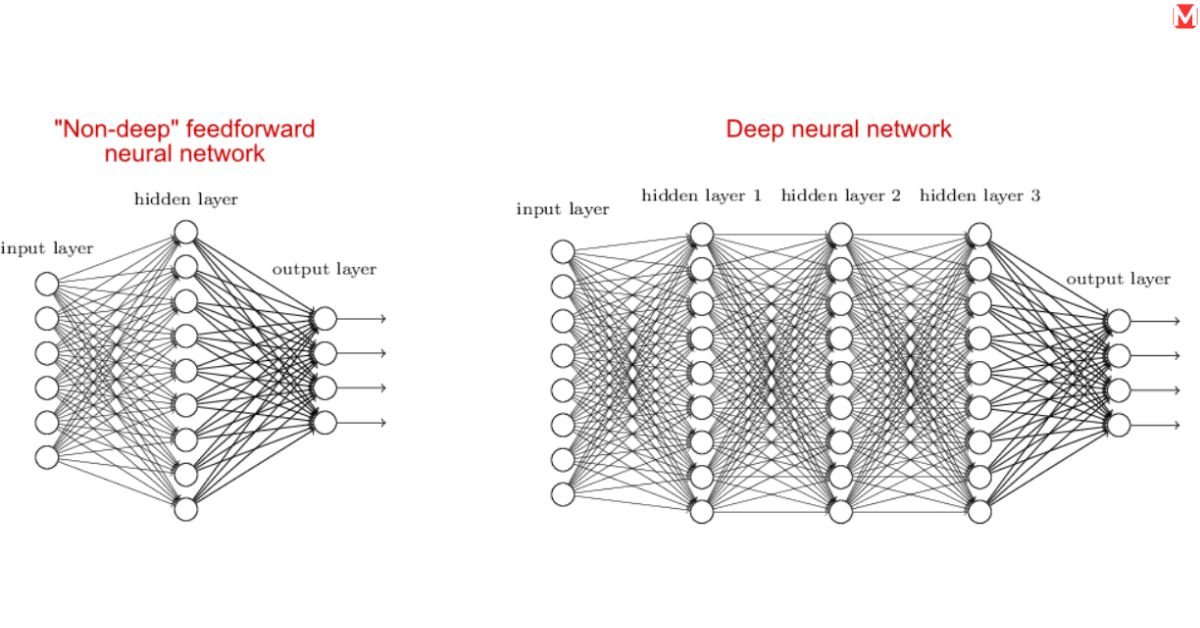
Many people confuse neural nets with deep learning. Here’s the difference:
Neural Networks:
- Can have just a few layers
- Simpler architecture
- Faster to train
- Good for basic tasks
- These types of neural nets are ideal when working with limited data and straightforward problems.
Deep Learning:
- Uses deep neural nets with many hidden layers
- More complex deep architecture
- Requires more training data
- Handles complex problems better
- Deep learning expands on traditional neural nets to solve advanced tasks like image recognition and language processing.
When to Use Each Approach
| Task Complexity | Recommended Approach | Example |
|---|---|---|
| Simple classification | Basic neural net | Email spam detection |
| Image recognition | Deep learning CNN | Self-driving car vision |
| Language processing | Deep learning Transformer | ChatGPT-style chatbots |
| Game playing | Deep learning with reinforcement | AlphaGo chess master |
History of Neural Networks
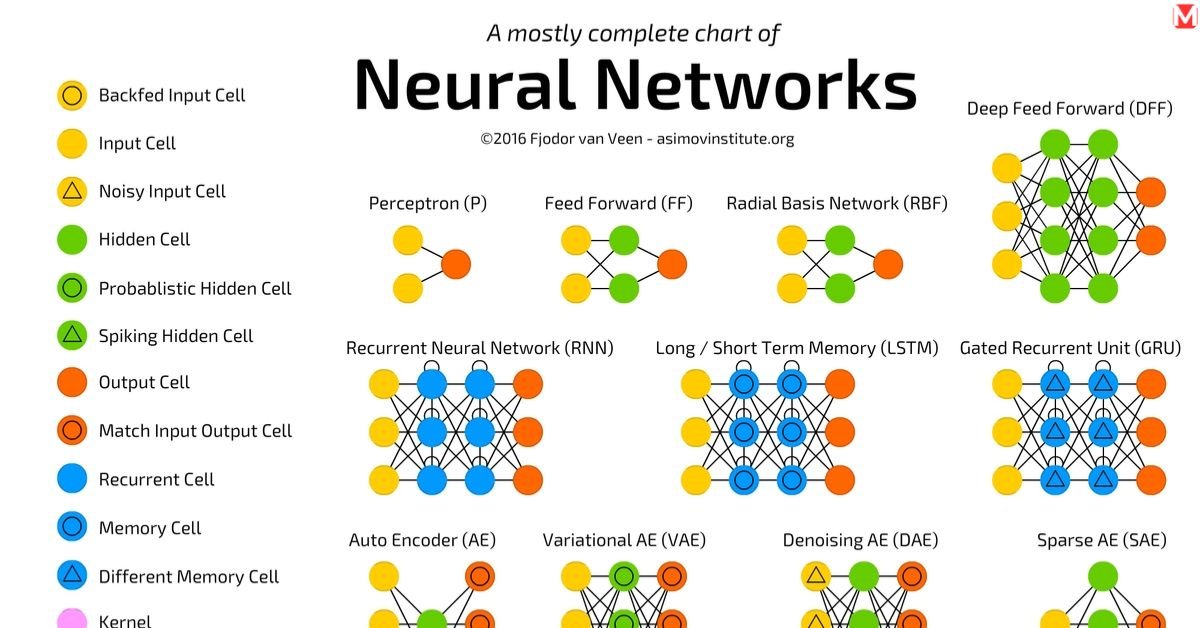
The journey of neural networks spans over 80 years of innovation:
Early Beginnings (1940s-1960s)
- 1943: McCulloch and Pitts create the first mathematical model of a neuron
- 1957: Frank Rosenblatt invents the Perceptron
- 1969: Minsky and Papert highlight limitations, causing the first AI winter
Revival Period (1980s-1990s)
- 1986: The Backpropagation algorithm revolutionizes neural network training
- 1989: Yann LeCun develops early CNNs for handwritten digit recognition
- 1997: LSTM networks solve the vanishing gradient problem
Modern Era (2000s-Present)
- 2006: Geoffrey Hinton coins “deep learning” and reignites interest in neural nets.
- 2012: AlexNet wins ImageNet competition, proving that deep neural nets deliver breakthrough results.
- 2017: Google’s Transformer architecture changes natural language processing and builds on the power of neural nets.
- 2022: ChatGPT brings artificial intelligence to mainstream audiences
"The development of full artificial intelligence could spell the end of the human race... but it also has enormous potential to benefit humanity." - Stephen Hawking
Stephen Hawking
Modern Applications Transforming Industries
Neural networks aren’t just academic curiosities – they’re solving real problems across industries:
Healthcare Revolution
- Radiology: AI systems detect tumors faster than human doctors
- Drug Discovery: Machine learning identifies new medicines in months, not years
- Personalized Treatment: Predictive modeling customizes therapy for individual patients
Transportation Innovation
Tesla’s Autopilot uses multiple convolutional networks to:
- Recognize traffic signs and signals
- Detect pedestrians and other vehicles
- Navigate complex road situations
Financial Services
- Fraud Detection: Neural nets spot suspicious transactions in milliseconds
- Algorithmic Trading: Deep learning models analyze market patterns
- Credit Scoring: ML algorithms assess loan default risk more accurately
Entertainment Evolution
Netflix uses artificial neural networks to:
- Recommend shows you’ll love
- Optimize video streaming quality
- Create personalized thumbnails for each user
Building Your First Neural Network
Ready to create your neural network? Here’s what you need:
Essential Tools and Frameworks
Python Libraries:
- TensorFlow: Google’s deep learning framework
- PyTorch: Facebook’s research-friendly platform
- Keras: Beginner-friendly high-level API
Simple Project: Image Classification
# Basic neural network structure
model = Sequential([
Dense(128, activation=’relu’, input_shape=(784,)), # Input layer
Dense(64, activation=’relu’), # Hidden layer
Dense(10, activation=’softmax’) # Output layer
])
Common Beginner Mistakes
- Using too little training data
- Choosing the wrong activation functions
- Setting incorrect learning rates
- Overfitting on small datasets
READ MORE ABOUT: Revival Period (1980s–1990s)
The Future of Neural Networks
Artificial intelligence, powered by neural networks,s will transform our world in incredible ways:
Emerging Technologies
- Quantum Neural Networks: Combining quantum computing with deep learning
- Neuromorphic Chips: Hardware that mimics brain structure
- Edge AI: Running neural nets on smartphones and IoT devices
Ethical Considerations
As AI systems become more powerful, we must address:
- Privacy concerns with personal data
- Job displacement from automation
- Bias in machine learning models
- Responsible development practices
Conclusion
Neural nets represent one of the most exciting frontiers in technology today. These brain-inspired models are already transforming industries from healthcare to entertainment, and as neural nets continue to evolve, we’re just getting started.
Whether you’re a student curious about artificial intelligence, a business owner looking to leverage machine learning, or a developer ready to build your first neural net, understanding these systems will prove invaluable in our AI-driven future.
